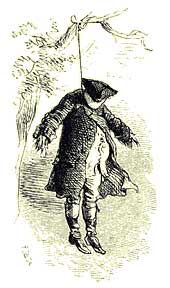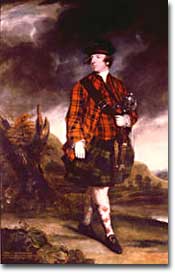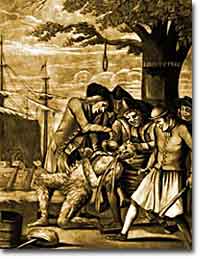13c. The Loyalists

Thomas Hutchinson, a Supreme Court justice in Massachusetts, was the most hated man in America before Benedict Arnold, and was hung in effigy many times for being a loyalist.
The year is 1774. Whether you are a merchant in Massachusetts, a German-born farmer living in Pennsylvania, a tavern-owning woman of Maryland, or a slave-owner in the South, you share some things in common. For instance, you probably don't like paying taxes on such goods as tea that wind up going to support the royal coffers in London. At the same time you like the notion of being part of the British Empire, the most powerful in the world.
Chances are you speak English and have many British relatives or ancestors. Or, even if you're a German farmer with no ties to Britain, you are still grateful for the opportunity to farm peacefully in this British-ruled land. Yet, you hear murmurings — radical notions about separating from Britain are making the rounds. Those hotheads in Boston recently threw a load of tea in the harbor and the British retaliated with something called the Intolerable Acts. A confrontation is looming.
Who will you support? The radical Americans or the British? Fact is, it's not an easy decision. Not only will your way of life be drastically affected, but whomever you choose to side with will make you instant enemies.

Lord Dunmore, the royal governor of Virginia at the start of the Revolutionary War, offered freedom to enslaved Africans and Indians for joining the British Army.
Any full assessment of the American Revolution must try to understand the place of Loyalists, those Americans who remained faithful to the British Empire during the war.
Although Loyalists were steadfast in their commitment to remain within the British Empire, it was a very hard decision to make and to stick to during the Revolution. Even before the war started, a group of Philadelphia Quakers were arrested and imprisoned in Virginia because of their perceived support of the British. The Patriots were not a tolerant group, and Loyalists suffered regular harassment, had their property seized, or were subject to personal attacks.
The process of "tar and feathering," for example, was brutally violent. Stripped of clothes, covered with hot tar, and splattered with feathers, the victim was then forced to parade about in public. Unless the British Army was close at hand to protect Loyalists, they often suffered bad treatment from Patriots and often had to flee their own homes. About one-in-six Americans was an active Loyalist during the Revolution, and that number undoubtedly would have been higher if the Patriots hadn't been so successful in threatening and punishing people who made their Loyalist sympathies known in public.
One famous Loyalist is Thomas Hutchinson, a leading Boston merchant from an old American family, who served as governor of Massachusetts. Viewed as pro-British by some citizens of Boston, Hutchinson's house was burned in 1765 by an angry crowd protesting the Crown's policies. In 1774, Hutchinson left America for London where he died in 1780 and always felt exiled from his American homeland. One of his letters suggested his sad end, for he, "had rather die in a little country farm-house in New England than in the best nobleman's seat in old England." Like his ancestor, Anne Hutchinson who suffered religious persecution from Puritan authorities in the early 17th-century, the Hutchinson family suffered severe punishment for holding beliefs that other Americans rejected.

American patriots used tar and feathering to intimidate British tax collectors.
Perhaps the most interesting group of Loyalists were enslaved African-Americans who chose to join the British. The British promised to liberate slaves who fled from their Patriot masters. This powerful incentive, and the opportunities opened by the chaos of war, led some 50,000 slaves (about 10 percent of the total slave population in the 1770s) to flee their Patriot masters. When the war ended, the British evacuated 20,000 formerly enslaved African Americans and resettled them as free people.
Along with this group of black Loyalists, about 80,000 other Loyalists chose to leave the independent United States after the Patriot victory in order to remain members of the British Empire. Wealthy men like Thomas Hutchinson who had the resources went to London. But most ordinary Loyalists went to Canada where they would come to play a large role in the development of Canadian society and government. In this way, the American Revolution played a central role shaping the future of two North American countries.






